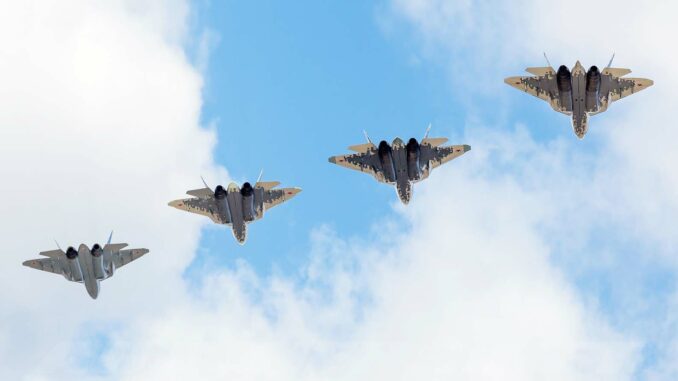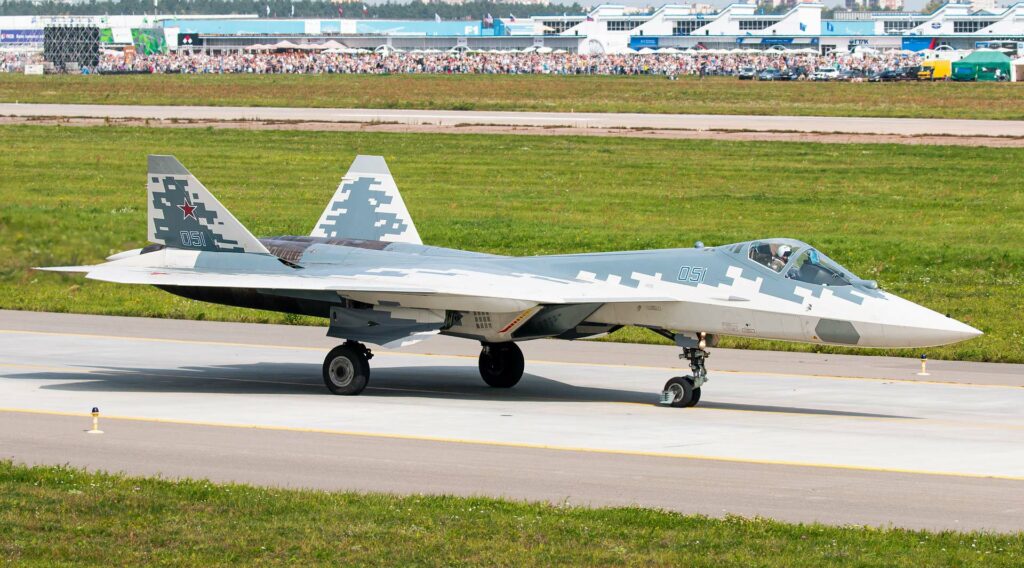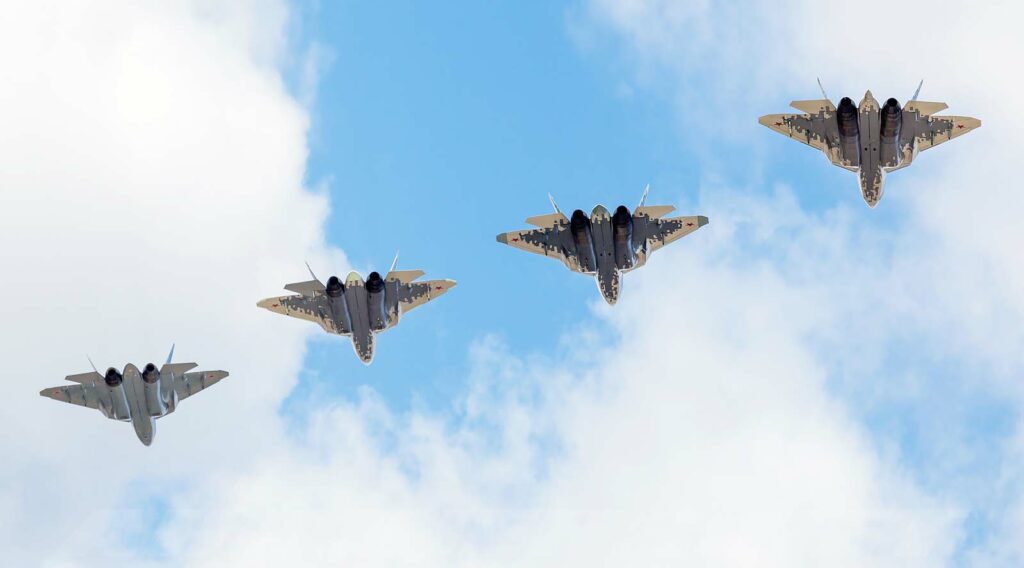
While Russia plans a two-seat stealth aircraft based on the Su-57 and Su-30 models, China unveils a two-seat variant of the J-20. These developments underline a significant evolution in military aircraft technology, with major strategic implications for modern air warfare.
Innovation and evolution in fighter aircraft design
Russia’s and China’s latest initiatives in the field of fighter aircraft mark an important milestone in the evolution of military aircraft technology. According to patent documents, Russia is working on a two-seater stealth aircraft based on the Su-57 and Su-30 models. Meanwhile, China has unveiled a two-seat variant of its J-20 stealth aircraft.
Design and features
The documents indicate that the new Russian aircraft would be essentially identical to the Su-57, with few design differences. This model has already demonstrated significant advances, notably during SEAD/DEAD missions in June 2022. It features an artificial intelligence (AI)-enabled pilot-cockpit interface, sophisticated communications systems, and advanced integration with the S-70 Okhotnik unmanned aerial combat vehicle (UCAV).
Strategic role and operational capabilities
In addition to its stealth capabilities, the new two-seater would be able to act as an air command post for networked operations, commanding different types of aircraft, both manned and autonomous. This air control point function would also include military training.
Encrypted communications and drone control
The aircraft’s communications system would enable communication in a wide range of types, in both open and encrypted modes, ensuring flexibility of use in combat. This orientation towards networked operations is consistent with the Su-57’s operational use in Ukraine, where four aircraft were linked to a single network to destroy air defense systems.

Technological and operational implications
This evolution represents a significant change in air warfare capabilities, offering greater flexibility and increased capacity to respond to modern threats. The ability to conduct networked operations and remotely control UAVs increases the range and effectiveness of aerial missions, while minimizing risks to pilots.
Design similar to the Su-30 or Su-57?
Although the design is largely based on the Su-57, reports in Russia suggest that it may be more an evolution of the Su-30. This ambiguity raises questions about the exact nature of the aircraft and its potential role in Russia’s military arsenal.
Internal-weapons routes and versatility
Descriptions indicate that the aircraft could be equipped with internal weapons bays, similar to those on the Su-57, F-22, F-35 and J-20, located between the engine air intakes. The use of UAVs from these bunkers for SEAD/DEAD missions is a possibility, although it remains speculative.
Strategic and political implications
These developments signal an important evolution in the aeronautical arms race. The ability to conduct networked operations and the development of multifunctional platforms reflect an adaptation to modern air combat challenges, including the need for operational flexibility and dominance in contested environments.
Economic impact
The cost of developing and maintaining these new-generation aircraft will be high, with a significant impact on defense budgets. This expenditure must be balanced with other national priorities, creating political and economic dilemmas.
Political implications
The introduction of these advanced aircraft on the world stage could intensify the arms race and influence geopolitical balances. The possession of such technologies by powers such as Russia and China could redefine regional and global power dynamics.

Towards a new era of aerial warfare
The development of stealthy two-seater fighter jets by Russia and China marks a significant evolution in military aviation technology. These advances indicate not only technological progress, but also adaptation to modern strategic realities. As these nations position themselves for air superiority in an increasingly complex world, the implications of these developments will be felt far beyond their borders, redefining the landscape of air warfare for decades to come.
War Wings Daily is an independant magazine.